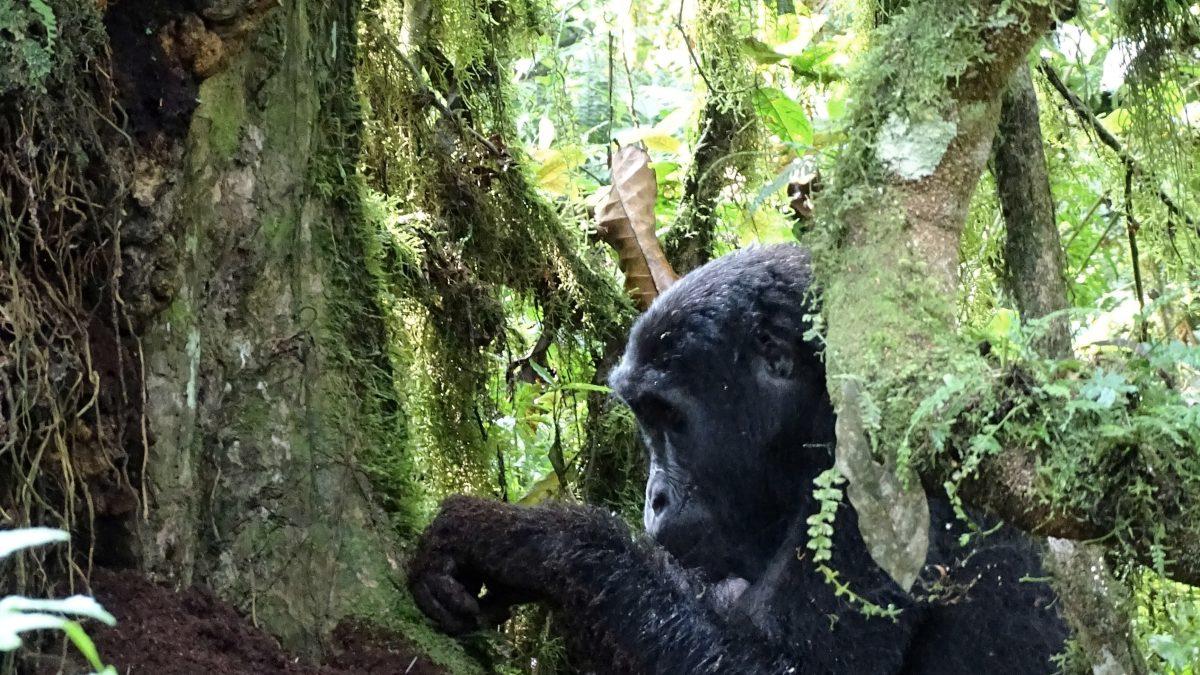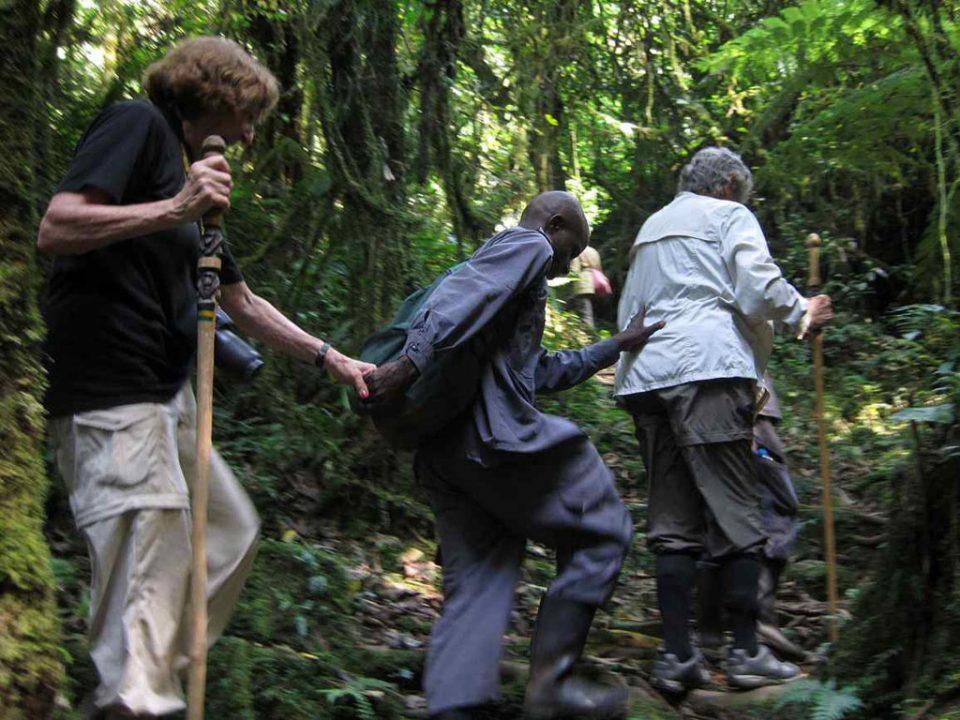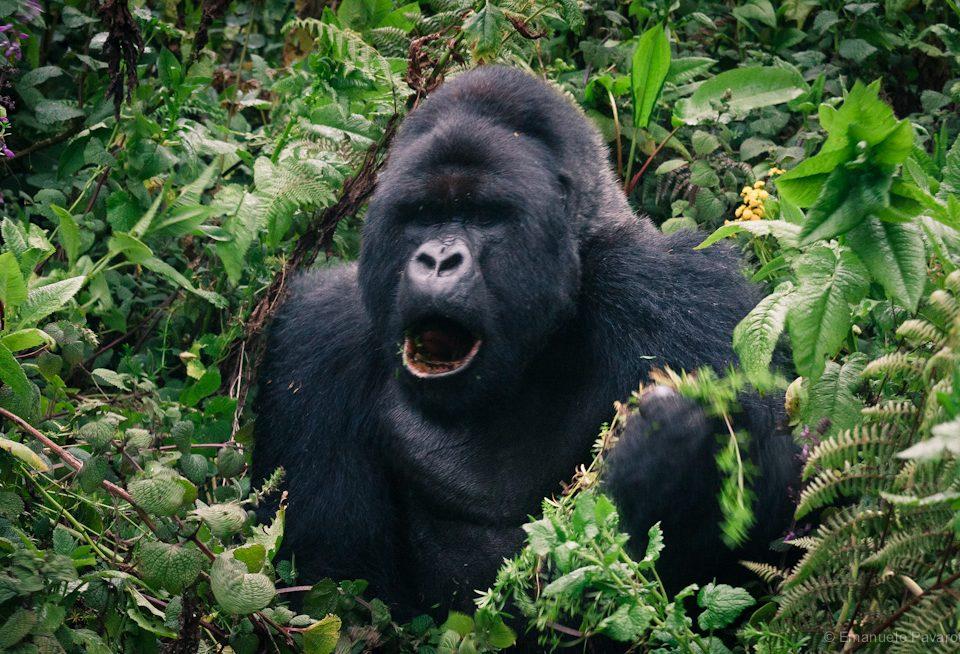
Gorilla trekking in Uganda is one of the most sort out activities in the tourism industry. Ugandan gorillas are gentle giants that display human like behaviors and emotions such as happiness and sadness. Gorillas are the largest apes with broad chest and shoulders, large hands and small eyes set into their hairless faces. Actually, gorillas share 98.3% of their genetic code with humans in fact gorillas are our closest cousins.
In Uganda, gorillas only survive in the wild and you can only trek them in two spots, Bwindi impenetrable forest National Park and Mgahinga Gorilla National Park. The only way to see them is by trekking these forests of Bwindi and Mgahinga National Park.
Gorillas are herbivorous apes that mainly feed on vegetarian diet, stems, bamboo shoots and fruits to gain stronger and muscular bodies. However the type of food they eat varies on the available food in the season since there are two seasons in Uganda that is to say the dry season and rainy season. we recommend travelers to visit Uganda for gorilla trekking to learn more about what gorillas eat while in their habitants.
Gorillas live in families and each family is led by a silver back who is the father of the family. An adult male gorilla weighs upto 440 pounds and a height of six feet when standing on two legs. For a mature male to lead a family should have white hair that develops on their back at the age of fourteen to be refered as a “silver back”.
It should be noted that Uganda has got the biggest number of gorillas as compared to Rwanda and Democratic Republic of Congo and these gentle giants are found in Bwindi and Mgahinga National Park.
It is hard work to navigate through these forests in such of these gorillas and for that reason the Uganda wildlife Authority set in place some guidelines for tourists to be able to trek gorillas in Bwindi and mgahinga National Park as discussed below.
First and foremost, only eight people are allowed to visit each habituated gorilla family. This will help minimize behavioral disturbance to the gorillas and the risk of their exposure to human born diseases since they share 98.3% DNA with humans making it easy to contract diseases from humans.
Do not touch the gorillas. You should not forget that gorillas are wild animals that can harm you for touching their bodies and there fore a 7meter distance should be maintained when you visit the gorillas in the park.
It is also very important to keep your voices low because it makes the gorillas more relaxed enabling you to carry out, you’re trekking very easy however you should never hesitate to ask the guide questions while trekking.
The maximum time to spend with the mountain gorillas is one hour this is because when you take a lot of hours mountain gorillas become agitated or nervous to the visitors there for the guide makes sure the visit ends early to limit their disturbance.
While trekking, it is very important to follow the guide’s instructions because sometimes these gorilla’s charge and may become aggressive to visitors. Following the guide’s example may decrease the risk of attack to visitors.
Do not litter rubbish around the gorillas in other words travelers should not leave anything behind after visiting the gorillas to ensure that gorillas are not exposed to rubbish that may affect their wellbeing.
In summary, Uganda has got the biggest number of gorillas that are worthy visiting and with the above guidelines a traveler is free to purchase a gorilla permit which goes for 700 USD in order to visit our closest cousins living in the wild of Bwindi and Mgahinga National Park and learn more about the mountain gorillas of Uganda.



